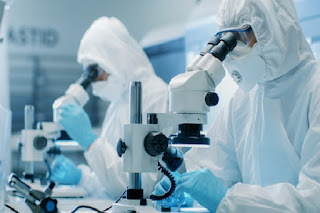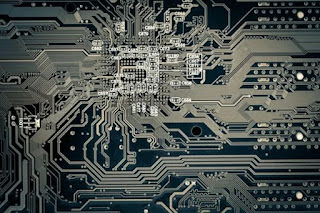Embedded systems: examples of human use
Computer chip processor hardware icon
Embedded systems, as we always say at Tribalyte
Technologies, even if we don't realize it, are part of our lives. In fact,
without them today we shouldn't have many of the conveniences that technology
has brought to us over the past sixty years lifebloombeauty.
What is an embedded system?
For those who do not yet knows the world of
"embedded", in a very summary way, one could say that an embedded
system, also called "embedded" or "embedded", is a type of
electronic system which, with a microcontroller or microprocessor - your
"brain" - is usually found inside devices and products which, thanks
to software (possibly developed in C / C ++ and Linux) can perform specific
functions. A classic example of an on-board system is the device of a modern
washing machine. To do our laundry it is necessary to select our washing program,
that is to say press a few buttons which, in turn, with software, will allow
the "system" to start and the chosen functions to be performed
perfectly. This is, very briefly and roughly, what normally occurs in all types
of devices that contain an on-board system futuretechexpert.
Security smartphone
What impact have embedded systems had on humanity?
As we said earlier, humans and embedded systems have been in
a "relationship" for over 60 years and the latest advances in R&D
have made it clear to us that this symbiotic machine / human alliance will grow
even stronger. And not only on our planet, but also in all space naturalbeautytrends.
Yes, exactly, in space. In fact, it is no coincidence that
the first on-board system in history was a guidance system developed by MIT
(Massachusetts Institute of Technology) for NASA and that it played a
fundamental role in the Apollo missions. towards the Moon. Today, astronautics
continues to be one of the sectors that invests the most in the research and
development of on-board systems. A well-known case would be, for example, that
of SpaceX, the American company founded by Elon Musk and that, with an
incredible investment in the development of on-board software, everything
indicates that it will launch the first interplanetary transport system (STI).
to transport humans to Mars techsmartinfo.
But, apart from these extreme cases, what should be noted is
that from the 1970s, the use of on-board systems began to gain ground in all
types of industry and sector ( unfortunately, also for the realization of
military weapons and technological weapons), until they creep into our daily
lives: means of transport, household appliances, security, industrial cars, the
automotive sector , railways ... to the interior of the human body smarttechpros.
Embedded systems and uses in the human body
Science fiction has accustomed us to thinking that "the
bionic man" is menacing, sinister, and evil. In fact, listening to
"the bionic man" or "the machine man", who didn't
immediately imagine a scene from "Terminator" shooting all living
things? It is also true that, in the collective imagination, there are
"more positive" and peaceful examples such as "RoboCop" or
"The Bicentennial Man". But, apart from science fiction and all the
cultural references or commonplaces that we may have in our society, and, above
all, without focusing only on the robotics sector itself, the advances that
technology has made in the application of on-board systems to improve and
improve the human condition is obvious and, rather, tangible.
In this respect, there is a very interesting series on
Netflix that talks about the mechanisms that move "our machine", our
organism and that I recommend to anyone who wants to dive into it: Inside the
human body.
Embedded systems in biomedical engineering
In the first chapter of this same series (I hope not to
triumph too much), is told the story of Jason Little, an American who lost his
left arm following a serious accident and who, thanks to an incredible study
carried out by Professor Ranu Jung (from the Department of Biomedical
Engineerings at Florida International University), using a technological
prosthesis, he was able to recover not only the mechanical functions of his
phantom limb, but even tactile and neural sensations. In other words, in this
specific case, it is not just an aesthetically flawless prosthesis that
respects extremely basic operations, but an advanced technological system that
overcomes the "barriers" of the human body.



YOUR BLOG IS VERY GREAT AND ATTRACTIVE TO EVERYONE, BECAUSE THIS BLOG HAS SO MUCH GREAT INFORMATION.
ReplyDeleteTHANKS FOR THIS!
온라인섯다
HI, I REALLY WANT TO ADMIRED THIS KIND OF POST BECAUSE THIS ARTICLE HAS SO MANY THINGS THAT I WANTED TO KNOW. THANKS
ReplyDelete성인웹툰
Really appreciate you sharing this article post. Really thank you! Really Cool.
ReplyDelete토토사이트
바카라
토토사이트
Greetings! Very helpful advice within this article!
ReplyDeleteIt is the little changes that make the greatest changes. Thanks a lot
for sharing!
majortotositepro2
racesitepro2
oncasinositenet2
totopickpro2